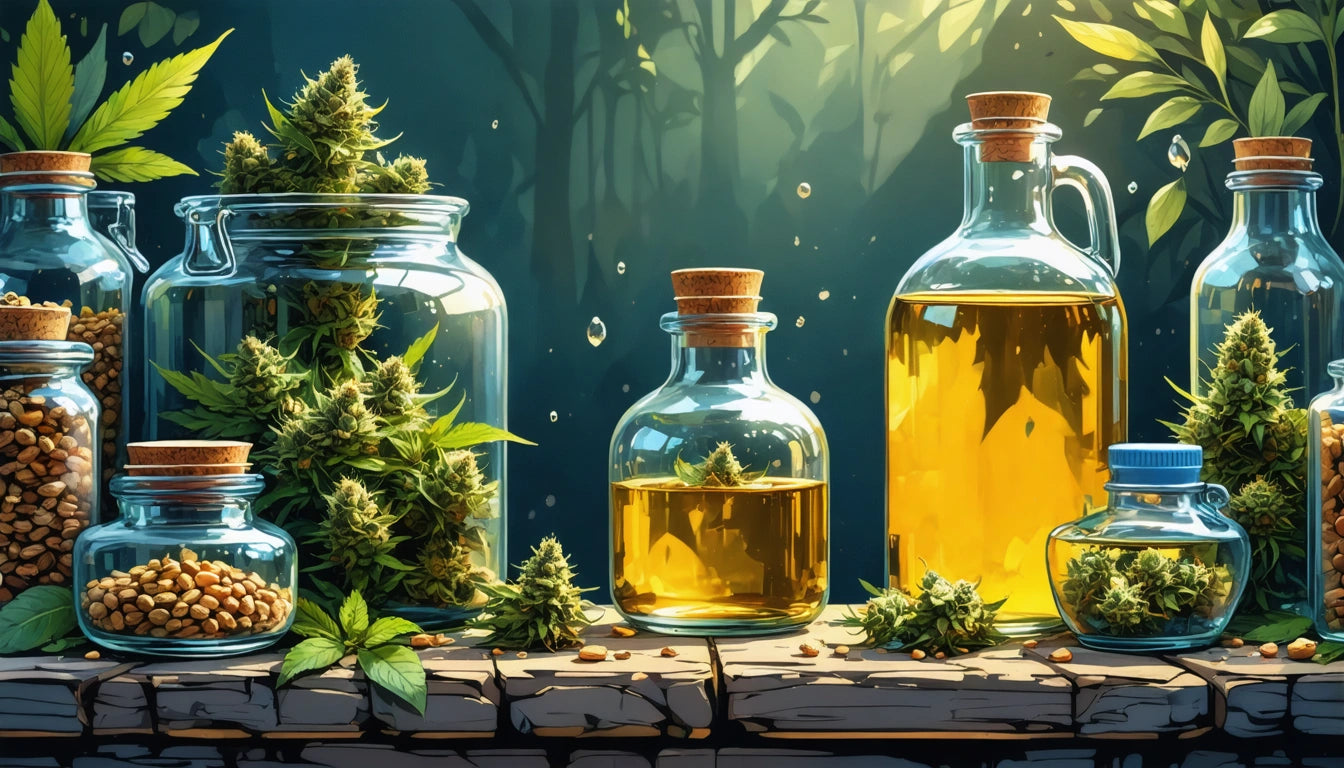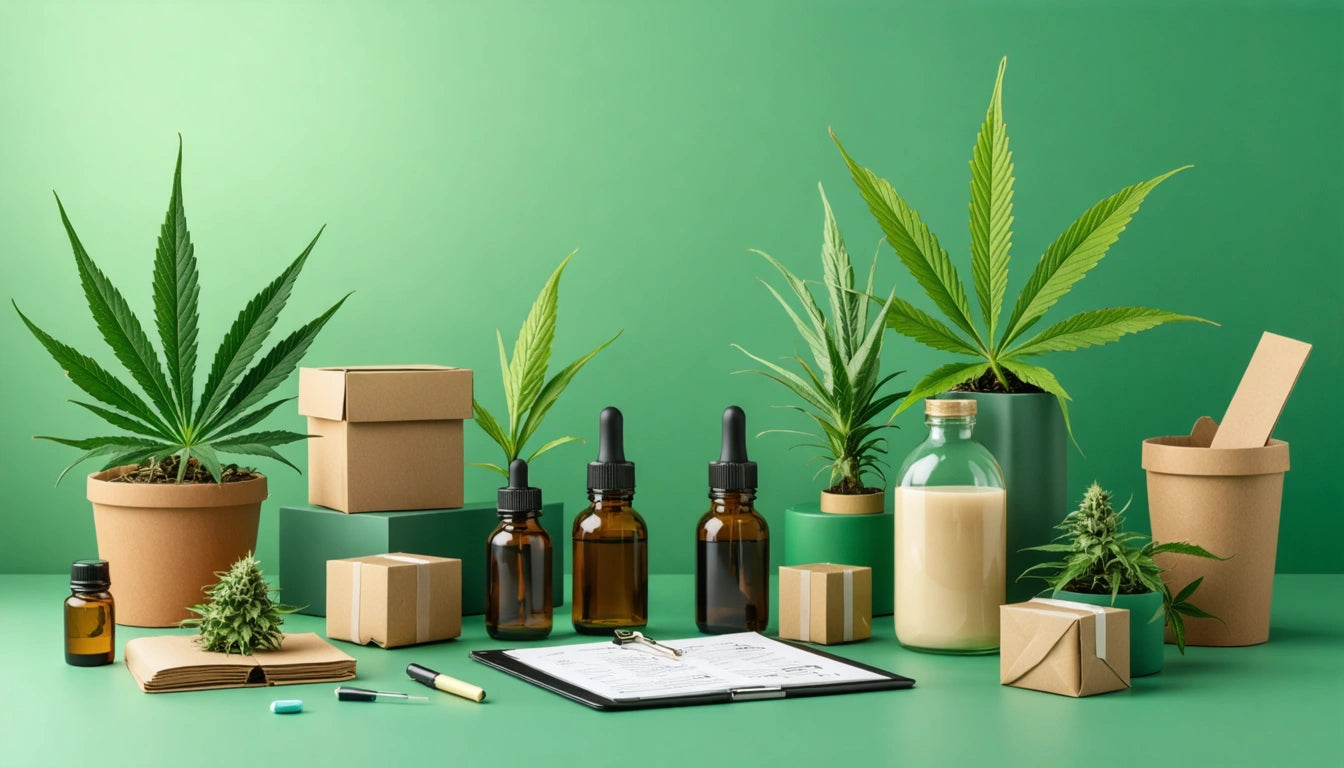Table of Contents
Cannabis terpenes are volatile compounds responsible for the plant's distinctive aromas and flavors. These fragile molecules also contribute significantly to the entourage effect and overall consumer experience. Without proper packaging, terpenes can degrade rapidly, diminishing product quality and reducing shelf appeal. This guide explores how to preserve these valuable compounds through strategic packaging choices.
Understanding Terpenes and Their Importance
Terpenes are aromatic oils that give cannabis strains their unique scents and flavors, from citrusy limonene to earthy myrcene. Beyond aroma, they work synergistically with cannabinoids to influence effects. Unfortunately, terpenes are highly volatile and begin degrading immediately after harvest due to exposure to:
- Oxygen (oxidation)
- Light (photodegradation)
- Heat (thermal degradation)
- Humidity fluctuations
According to research on cannabis degradation, proper packaging can slow these processes significantly, preserving up to 95% of terpene content when done correctly.
Packaging Materials That Preserve Terpene Profiles
Glass vs. Mylar: The Great Debate
When comparing packaging options, material choice significantly impacts terpene preservation. Glass jars versus mylar bags represents one of the industry's most common debates.
Glass offers superior oxygen barrier properties and doesn't impart flavors to the product. However, it provides minimal light protection unless tinted. Conversely, multilayer mylar bags provide excellent light barriers and can include oxygen barriers, though they may affect subtle flavor notes over extended periods.
Emerging Materials
New packaging innovations include:
- UV-resistant glass with oxygen-scavenging liners
- Biodegradable plant-based films with terpene-preserving properties
- Modified atmosphere packaging that replaces oxygen with nitrogen
These materials align with both preservation goals and sustainability objectives without compromising product integrity.
Humidity Control: The Key to Terpene Preservation
Maintaining optimal relative humidity (RH) between 58-62% creates the perfect environment for terpene preservation. When humidity drops too low, terpenes evaporate more readily. When it climbs too high, mold risks increase.
Integrating humidity control solutions like Boost packs into your packaging strategy maintains this sweet spot, extending terpene shelf life by regulating moisture content. These two-way humidity control systems absorb excess moisture when levels are too high and release moisture when levels drop too low.
Research shows properly maintained humidity levels can extend terpene preservation by up to 15% compared to unregulated packaging environments. This translates directly to improved customer satisfaction and reduced product returns.
Light and Temperature Management
Light exposure accelerates terpene degradation through photochemical reactions. UV light is particularly damaging, breaking down terpenes rapidly. Similarly, heat speeds up molecular movement, causing faster evaporation of these volatile compounds.
Effective packaging solutions must address both concerns:
- Opaque or amber-tinted containers block harmful light wavelengths
- Insulative packaging materials help buffer temperature fluctuations
- Strategic retail display positioning away from direct light and heat sources
Rigid packaging options often provide better temperature stability than flexible alternatives, though innovations in flexible packaging continue to narrow this gap.
Packaging Innovations for Maximum Terpene Protection
Nitrogen Flush Technology
Replacing oxygen with nitrogen during the packaging process significantly reduces oxidation. This technique, borrowed from the food industry, creates an inert environment that preserves terpenes from degradation. Brands implementing nitrogen flush report terpene preservation improvements of up to 25% over standard packaging methods.
Resealable Solutions
Once opened, cannabis flower begins losing terpenes rapidly. Reclosable packaging options with airtight seals minimize this exposure, preserving terpenes between uses. Child-resistant zippers, push-and-turn caps, and vacuum-seal technologies all contribute to maintaining product integrity after the initial opening.
Integrating Consumer Education
Packaging that educates consumers about proper storage extends terpene preservation beyond the point of sale. Clear instructions regarding temperature, light exposure, and humidity can significantly impact the consumer experience. Brands that include storage guidance report higher customer satisfaction and repeat purchases.
According to consumer trend research, buyers increasingly value packaging that helps maintain product quality at home, with 67% willing to pay more for solutions that preserve terpenes effectively.
Future of Terpene Preservation Technology
The cannabis packaging industry continues to evolve with terpene preservation as a primary focus. Upcoming innovations include smart packaging with color-changing indicators that signal terpene degradation, biodegradable materials with enhanced barrier properties, and consumer-level terpene testing tools.
Brands that stay ahead of these trends position themselves as quality leaders in an increasingly competitive market. By implementing current best practices while monitoring emerging technologies, producers can ensure their products deliver the full sensory experience consumers expect.
Ultimately, preserving terpenes through proper packaging isn't just about maintaining product quality, it's about delivering on brand promises and building consumer trust in an industry where flavor, aroma, and effects are paramount to the experience.











Leave a comment
All comments are moderated before being published.
This site is protected by hCaptcha and the hCaptcha Privacy Policy and Terms of Service apply.